
views
X
Research source
[2]
X
Research source
Teaching Communication Skills

Practice communication. Children require face-to-face interactions in order to develop healthy social-emotional skills, such as the ability to understand and communicate with others. Communicating is the skill of determining what one wants to communicate and realizing how it will be understood by others. It is much more than understanding language, reading, writing, and speaking. For each child, forms of communication can be different. But generally, they must consider what they want to communicate and how to communicate it most effectively. Simply talking to a friend, family member, or parent can help them develop these skills. Spend time each day without distractions listening to and responding to your child.

Teach listening skills. Listening skills are just important as conversation skills, but many homeschooled middle and high school students miss out on opportunities to improve their active listening comprehension skills, owing to the fact that they do not have to interact with others as much as children in public schools.

Teach appropriate vocabulary. Teach respectful alternatives to tense situations. Remind students that being aggressive, rude, or passive usually makes things worse. The best solution is to remain calm. For example, telling someone, "you're stupid," may be more inflammatory than simply saying, "I disagree with you." It may be obvious to adults, but it may be less obvious to children. Encourage older children to use cleaner language and limit curse word usage in public. Read How to Teach Kids to Disagree Respectfully.

Teach nonverbal communication skills. Nonverbal communication is important is because it can give someone valuable information about how somebody is feeling, know how to approach someone. Here are the main types of nonverbal communication skills to teach children: Tone of voice: People tend to listen to the words said and "read" the voice of someone speaking. A voice can have a particular tone and volume, through which anger, love, sarcasm, or sadness are indicated. Eye contact: Attraction, interest, hostility, and fondness can all be conveyed through eye contact. Eye contact is important for a conversation, as it's used a means to understand whether the person we are talking to is following us or not. Body language: The way someone sits, walks, stands, or holds their head can say a lot about someone and their mood. The way someone moves can convey a large amount of information. For example, someone crossing their arms could show they are in a bad mood or feel unsafe in an environment. Facial expressions: Human faces are very expressing. Many different emotions can be communicated without saying a single word. Expressions of joy, sadness, anger, fear, disgust, and surprise are shared by all cultures around the world. Keep in mind that children with autism spectrum disorder (ASD) might have difficulty communicating nonverbally, through hand gestures, eye contact, and facial expressions.
Teaching Money Skills
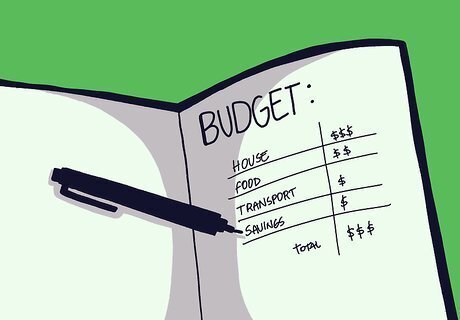
Show your child how to budget. When your child is an adult, budgeting can help them organize their expenses, manage their income, and keep their finances in check. It's beneficial for your children to see how you budget, but begin slowly. Allow them to assist you in planning your weekly grocery shopping, for example. Begin by making a list out of sale flyers and coupons, and then stick to it at the store. This could turn into a game of survival for them. Keep in mind that your example will be followed by your children. So, while telling them about budgeting is important, it has a much greater impact if they see you sticking to a budget yourself.

Talk about saving money. It is beneficial for children to be reminded of the importance of saving and the importance of not spending all of their money right away. When your child earns money, they should first set aside some for savings. It is recommended that you save at least 10% of your earnings. Because children have fewer expenses, this percentage can be increased. Savings can be accumulated in a variety of ways. To earn interest, some people use a jar, piggy bank, or even a joint bank account. The savings account should be kept for both emergencies (such as a new bike tire) and long-term goals (like a first car). You might create an allowance system that's met through your children completing certain chores or getting certain goals met through school and homework.

Teach the importance of sharing money. It's beneficial to teach children about charity and donation at a young age. When one person has a opportunity, they can give opportunities to the less fortunate and those in need. Each time your child spends some of their allowance money, you might encourage them to donate 10% to a local charity.

Find unique ways to teach your child about money. Teaching children how to manage their money is one of the most important lessons parents can teach them, but it can be time-consuming. Here are some simple ways to teach your child about money that they will enjoy: For kids ages 3-6: Consider purchasing a grocery store playset that allows you and your child to roleplay as a cashier and a customer. These playsets usually come with a shopping basket, plastic produce, fake money, and a child-sized cash register that can be used to teach children about real-world financial transactions. For kids 6-9: Once your child understands the value of money, teach them to save any money they earn, receive as an allowance, or receive as a gift. This will allow your child to see their money grow while also teaching them to separate their savings and spending money. For ages 9 and up: Involve them in trips to the store. Involving your children in the purchasing process is one of the most effective ways to improve their financial literacy. Take your child to the grocery store and give them a snack budget. Encourage them to compare products based on price rather than brand names or box art. For ages 10 and up: Play financial board games with them. Popular board games such as Monopoly Jr. and Payday use play money and necessitate careful financial planning to win. For ages 12 and up: Children's debit cards. When you're confident that your child understands the fundamentals of money management, consider signing them up for a kids' debit card. These cards are generally classified into one of two types: Children's prepaid debit cards, or children's debit cards linked to a checking account. Many kid-friendly prepaid cards have monthly fees and mobile apps that allow parents to assign chores and pay allowances, whereas kid-friendly checking accounts are free but have less parental oversight.

Apply negotiation skills. They may need to use negotiation skills when purchasing a home, and they will undoubtedly need a lot of patience and a good temper. To get a job, your child will need to improve their communication skills, as well as consider how they will apply for a job and how they will handle an interview.
Teaching Focus and Self-Control

Understand why concentration, self-control, and productivity are important. Children need concentration and self control to achieve goals, especially in a world filled with distractions and information overload. This includes paying attention, exercising self-control, remembering the rules and thinking flexibility.

Practice attention with them. Attention is referred to as focus, and it entails being alert and "orienting." Orienting is the ability to focus one's attention on specific tasks that will assist them in achieving whatever their goal is. As children grow older, concentration becomes an important part of their focus. If your child has ADHD/ADD, autism/ASD, or a hard time focusing in general, try to be patient with them, as they are likely trying their best despite having difficulty focusing.

Turn focus into a game. A variety of games and activities can help young children improve their focus and self-control. 'I spy', guessing games, 'red light-green light', and 'musical chairs' are all excellent ways to help children practice their focus and self-control skills.

Exercise self-control. Controlling one's physical actions, emotions, and behavior is a skill that children should learn. You can help young children learn these skills by showing them methods help to calm down and re-center, such as taking deep breaths when they are angry or leaving a room when they are upset rather than hurting someone or themselves.
Teaching Nutrition and Cooking
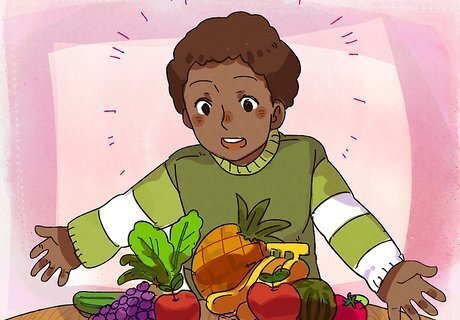
Talk about healthy eating and nutrition. Nutrition. Teaching your children the importance of nutrition and how to read nutrition labels will help them understand what they are putting in their bodies and how to make healthier choices. Nutrition education is an excellent way to prevent childhood obesity and help children maintain a healthy lifestyle as they grow older. Healthy eating can assist your child in achieving and maintaining a healthy body weight. A well-balanced diet will also help them consume important nutrients, lowering their chances of developing serious health problems. For younger children, you could sort fake foods by having them sort them into fruits, vegetables, protein, and carbs. For the youngest children, focus solely on fruits and vegetables.
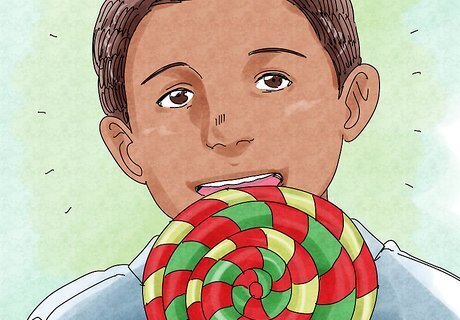
Don't forbid specific foods. When we label foods as bad, unhealthy, or junk, we risk making them feel bad about themselves for eating them, as well as setting the stage for a classic parent-child power struggle. Simply encourage them to eat everything in moderation and don’t restrict foods.

Cook with your kids. Cooking provides an opportunity to teach your children a variety of important life skills, the most important of which is the ability to make healthier eating choices. Making their own food teaches your children to make healthier eating choices and allows them to enjoy a wider variety of more nutritious foods, because nothing beats home cooking. In addition, exposing your children to the culinary process can teach them new ways to enjoy vegetables, fruits, and lean meats. Picky eaters, especially children, are more likely to try foods they've prepared with you than foods they've prepared elsewhere. Teach Cooking. Cooking is an essential life skill all kids need whether they are homeschooled or not. Check out How to Teach Kids Basic Cooking Techniques for great tips and instructions on how to teach your child how to cook.
Teaching Housekeeping

Teach your child to clean up after themselves. When it comes to cleaning, children under the age of four are somewhat limited due to their small size and poor motor skills, but that doesn't mean they can't help. You can begin teaching your child how to keep things tidy and organized when they are two or three years old. Set up plastic bins for your child's toys and label them with pictures so your child knows where to put each item. (For example, place a picture of a building block in the bin designated for blocks.)
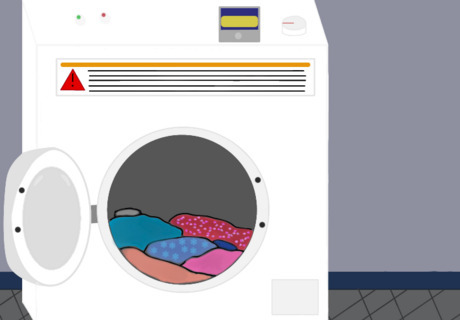
Help an older teenager do the laundry. Properly laundering clothes keeps them looking clean and professional. Despite this, many adults are unaware of the proper way to do laundry. To avoid your child becoming a statistic, begin teaching them how to fold and sort their own laundry around the age of six. They should be able to load their own laundry into the washing machine and dryer (with your supervision) by the age of twelve, and they should be able to read basic laundry symbols. Consider getting your young child a toy vacuum so they can practice vacuuming. Vacuuming is one chore that most children are eager to try. Small children are often fascinated by the idea of using a noisy, powerful machine to suck up debris, but they are simply not strong enough to use these devices safely. You can, however, involve your child in the action by purchasing a toy vacuum cleaner.
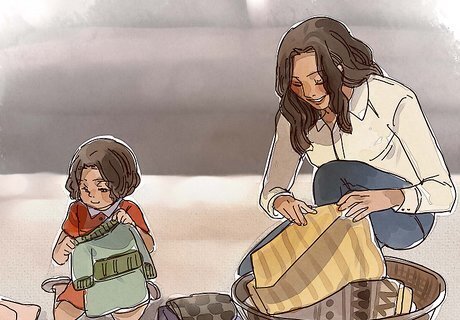
Make household chores, such as dish-washing, a family affair. Whether you use a dishwasher or do your dishes by hand, enlisting your child’s aid can make the job go faster. By age six, most kids are tall enough to reach the sink and coordinated enough to scrape off, rinse, and dry dishes. Still, to prevent accidents, you should have your child wash only plastic dishes, cups, and containers while he gets accustomed to handling dishes. Wash glass items and metal cutlery yourself until your child is nine or ten years old.
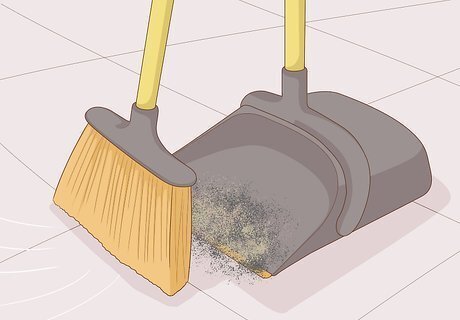
Show an older child on how to sweep and mop the floor. Sweeping and mopping are tasks best suited to children over the age of eight because they require a certain level of strength and coordination. When your child is old enough, show them how to sweep up debris and dispose of it before showing them how to prepare a mop and bucket to clean the floor. By the age of 7 or 8, children can begin to learn how to sweep floors. Younger children can even hold a dustpan for a partner to sweep into. In addition to traditional brooms, older children can learn to use other types of sweepers.
Teaching Critical Thinking

Understand why critical thinking matters. We live in a complex world where adults must analyze information and make decisions about a wide range of issues on a daily basis. Children must develop hypotheses, take risks, test their ideas, make mistakes, and find solutions through play—all of which are essential components of critical thinking development. Rich, open-ended play is an excellent way to develop critical thinking skills. Make time for young children to play alone or with friends every day. Playing roles (such as pretending to be fire fighters or super heroes), building structures, playing board games, or playing outside physical games such as tag or hide-and-go-seek are examples of this type of play.

Practice time management. Understanding how to manage time to complete tasks reduces stress levels and increases productivity. It’s an important skill for adult years and life. It can also teach the rewards of managing time effectively in order to have more time for other interests and activities. Show your child how to create routines and schedules. This can make a significant difference in their daily lives and life management.

Ask your child(ren) open-ended questions. Rather than automatically providing answers to your child's questions, encourage them to think critically by asking questions in return: "What suggestions do you have? What do you think is going on here?" Respect their responses, whether you agree with them or not. You might say, "That's interesting. Tell me why you think that."

Assist children in developing hypotheses. Taking a moment during play to form hypotheses is a critical thinking exercise that helps develop skills. Ask your child, "What do you think will happen if we do this?" or "Let's make a prediction about what we think will happen next."














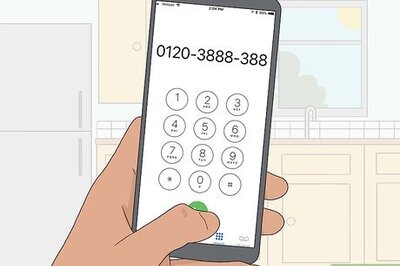



Comments
0 comment